
Table of Contents
What Is Self Compacting Concrete?
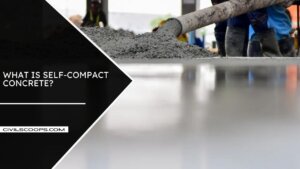
Making concrete structures without vibration has been done in the past. For example, the placement of concrete under-water is done by the use of tremie without vibration.
Shaft concrete and mass concrete may be successfully placed without vibration.
But the above examples of concrete are normally of lower strength and difficult to obtain consistent quality.
Modern application of SCC (self-compacting concrete) is focussed on high performance, better and more reliable, and uniform quality.
List of Test Methods for Workability Properties of Self Compacting Concrete (SCC)
- Slump flow by Abrams cone.
- T50 cm Slump flow
- J-ring
- V-funnel
- V-funnel at T5 minutes
- L-box
- U-box
- Fill-box
- GTM Screen Stability Test
- Ouimet
In this article, we are discussion & Procedure Slump Flow Test
What Is U Box Test?
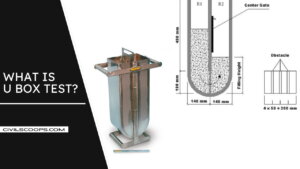
The test was developed in Japan The test is used to measure the filling ability of self com, pacting concrete. The apparatus consists of a vessel that is divided by a middle wall into two compartments shown by R1 and R2 in Show in Figure.
An opening with a sliding gate is filled between the two compartments. Reinforcing bars with a nominal diameter of 13 mm is installed at the gate with the center to center distance of 50 mm.
This creates a clear spacing of 35 mm between the bars. The left-hand section is filled with about 20 liters of concrete. The gate is then lifted and the concrete flows to the other section. The height of concrete in both sections is measured.
Equipment U-Box Test
U-Box
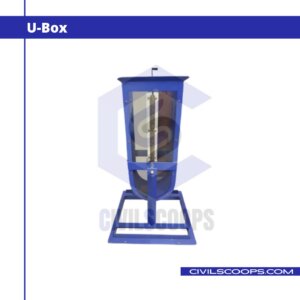
- U-box of a stiff non absorbing material
Trowel
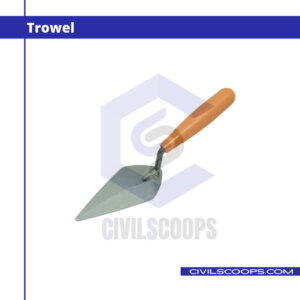
- This tool is used to place cement mortar.
Scoop
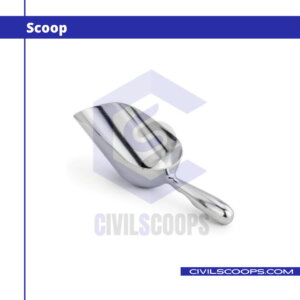
- This use in QC department for the material.
Stop watch
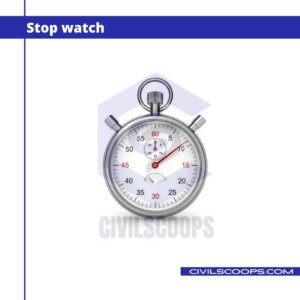
- Use for time record
Procedure U-Box Test
- About 20 litre of concrete is needed for this test.
- Ensure that sliding gate can open freely and then close it.
- Moisten the inside surface and remove any surplus water.
- Fill the one compartment of the apparatus with about 20 litre concrete.
- Leave it to stand for 1 minute.
- Lift the sliding gate and allow the concrete to flow to the other compartment.
- Once the concrete has come to rest, measure the height of the concrete in the second compartment in two places.
- Calculate the mean. Let it be H2. The height of concrete in the 1st compartment be H1.
- Calculate H1 – H2 the filling height. The whole test has to be completed within 5 minutes.
Calculations U-Box Test
- Filling time, Express the measured filling time, TU (sec) = ______ sec
- Height in the pouring compartment (H1) = _______
- Height in the other compartment (H2) = ______
- Calculate (H1– H2) = ________
Results U-Box Test
- The filling height of self compacting concrete is ______
Significance U-Box Test
- If the concrete flows as freely as water, at rest it will be horizontal, so H1– H2 = 0.
- Therefore the nearer this test value, the ‘filling height’, is to zero, the better the flow and passing ability of the concrete.
What Is U Box Test?
U Box test is used to measure the filing ability of self compacting concrete. The apparatus consists of a vessel that is divided by a middle wall into two compartments; an opening with a sliding gate is fitted between the two sections.
How Many Tests Are There in SCC Concrete?
5 most commonly used self-compacting tests as listed below, Slump Flow Test. V-Funnel Test. L-Box Test. U-Box Test
U Box test Apparatus
The apparatus consists of a vessel that is divided by a middle wall into two compartments; an opening with a sliding gate is fitted between the two sections.
U Box Apparatus Uses
Here, U Box apparatus uses are as follows.
- U-Box: U-box of a stiff non absorbing material
- Trowel: This tool is used to place cement mortar.
- Scoop: This use in QC department for the material.
- Stop watch: Use for time record
Like this post? Share it with your friends!
Suggested Read –
- What Is Road Pattern | Different Types of Road Patterns
- What Is Weep Holes | Function of Weep Holes | Types of Weep Holes
- All About of Fence | What Is Fence | Different Types of Fences | Advantages of Fence
- All About of Retention in Construction | What Is Retention in Construction | Retention in Construction
- All About of Underwater Concrete | What Is Underwater Concrete | Advantages & Disadvantages of Underwater Concrete